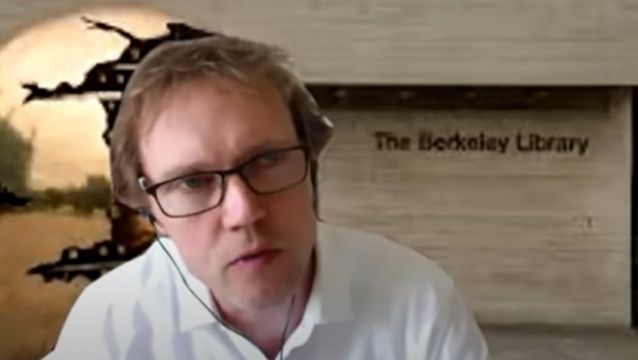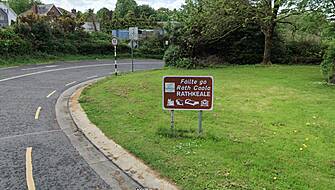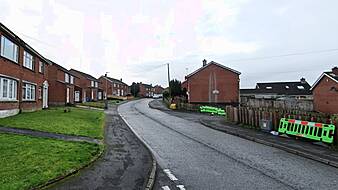The judge presiding over a law professor's murder trial has told the jury that an issue has arisen with the translation from French to English of key eyewitness evidence, where the defendant was described as "really pissed off" moments before he fatally shot an unarmed trespasser in the back of the head on his farm.
Ms Justice Siobhan Lankford on Monday told the jury that this was a "somewhat vulgar translation" and the word used by the French-speaking witness did not carry that connotation.
Diarmuid Phelan (56), with an address at Kiltalown Lane, Tallaght, Dublin 24, has pleaded not guilty to murdering Keith Conlon (36) at Hazelgrove Farm, Kiltalown Lane, Tallaght, on February 24th, 2022.
Mr Phelan is a barrister, law lecturer and farmer who owns Hazelgrove Farm, formerly a golf course in Tallaght.
Last week, eyewitness Pierre Godreu described the moment Mr Phelan "got a pistol from his pocket" and shot twice in the air before discharging a third shot "towards" an unarmed trespasser on his farmland.
Under cross-examination, farmhand Mr Godreu had told defence counsel Michael Bowman SC that Mr Phelan looked "really pissed off" when he was walking away from a wooded area on his lands, followed by two angry men who were arguing with him.
Addressing the jury today, Ms Justice Lankford said the trial had been delayed this morning as parties had been engaged in the exploration of a legal matter primarily in relation to a translation issue.
The judge said she had told the jurors last week that translation can be complex as there are "nuances" and they had to be aware of that when dealing with translated evidence.
She said Mr Godreu had given evidence via video-link from Brussels last week, and he had the benefit of an interpreter in court. She said the word "énervé" had been used by Mr Godreu to describe Mr Phelan's countenance or expression when he came out of the woods on his farmland on February 22nd.
The judge said the translation given by the interpreter to the jury for the word "énervé" was "pissed off".
The judge said that the translation was "a slang" or a "somewhat vulgar translation" and the word "énervé" did not carry that connotation. "The tone being used did not convey something in slang," she added.
Ms Justice Lankford also pointed out that when the word "énervé" was used by Mr Godreu there was "no intensifier".
"There was no 'very' or 'really'; it was simply the word 'énervé'," she explained.
Lastly, the judge said the word "énervé" has a range of meanings from "edgy to annoyed".
She said when she reached the conclusion of the evidence she would deal in detail with the passage.
The trial resumed in evidence with the cross-examination of a garda mapping expert. Detective Garda Padraig Coone was questioned by Sean Guerin SC, defending, about the terrain of the farmland where the shooting had taken place.
Opening the prosecution’s case last week, Roisin Lacey SC said the jury will hear evidence that on the day in question three men including Mr Conlon had trespassed on a wooded area of Mr Phelan's land while hunting foxes or badgers.
Ms Lacey said that Mr Phelan told gardaí he became concerned about a dog running loose on his land towards his sheep and shot it with his Winchester rifle, whereupon he said three men immediately "exploded" from the wooded area and began threatening him.
The 12 jurors were also told by the State that Mr Phelan said he was shaking with fear and "scrambled" up a bank to get away but when the dead man, Keith Conlon, and a second man kept coming he believed they were "coming to fulfil the threats they had made".
As they got closer, Mr Phelan said he reached for his Smith & Wesson revolver in his pocket and fired in the air over their heads but was "stunned when one man went down", the court has heard.
Det Gda Coone agreed that there was a sign on the maps saying "Hazelgrove Golf Course". The witness agreed at the time of the incident it was no longer a nine-hole golf course but an active farm.
The detective also agreed there was a downward slope from the field where Mr Conlon was shot to the river on the farm.
Mr Guerin said the jury would be hearing evidence that the fatal injury to Mr Conlon's head had struck him approximately 6cm below the top of the head.
The witness agreed with counsel that a person standing at the bottom of the slope and walking to the top, that "their feet would take them up an elevation" of 1.46 metres.
"Likewise, their head changes in elevation by 1.46 metres," asked Mr Guerin. The witness agreed with the statement.
"And so a shot that struck someone in the head 6cm from the top of the head if they were standing at the top of the hill would have cleared their head by a meter and a half if they were standing at the bottom of the slope," asked the lawyer. Det Gda Coone agreed with this.
The detective further agreed that the elevation changes by 16cm in the last metre; almost three times the distance from the top of the head to the point of impact.
Mr Guerin said there had been evidence given to the jury that the gap between Mr Phelan and the trespassers approaching him had closed to two metres before any shot was fired.
In re-examination by John Byrne SC, prosecuting, Det Gda Coone agreed that those calculations were on the assumption that the three shots were fired in exactly the same trajectory without any deviation.
In her opening address, Ms Lacey said she expects the defence case to be that the accused was entitled to discharge the firearm in a legitimate act of self-defence.
They will say that it was not done with the intention of causing the bullet to penetrate Mr Conlon's body and that the penetration was an accidental, unintended result, she stated.
Mr Conlon, from Kiltalown Park in Tallaght, was seriously injured in the shooting incident on February 22nd and died at Tallaght University Hospital two days later.
The State's case, Ms Lacey highlighted, is that when the third shot was fired, the gun was pointed in the direction of the deceased who was shot in the back of the head when he had turned away to leave. "In those circumstances we say the accused intended to kill or cause serious injury," counsel said.
The trial continues tomorrow before Ms Justice Lankford and a jury of nine men and three women.







